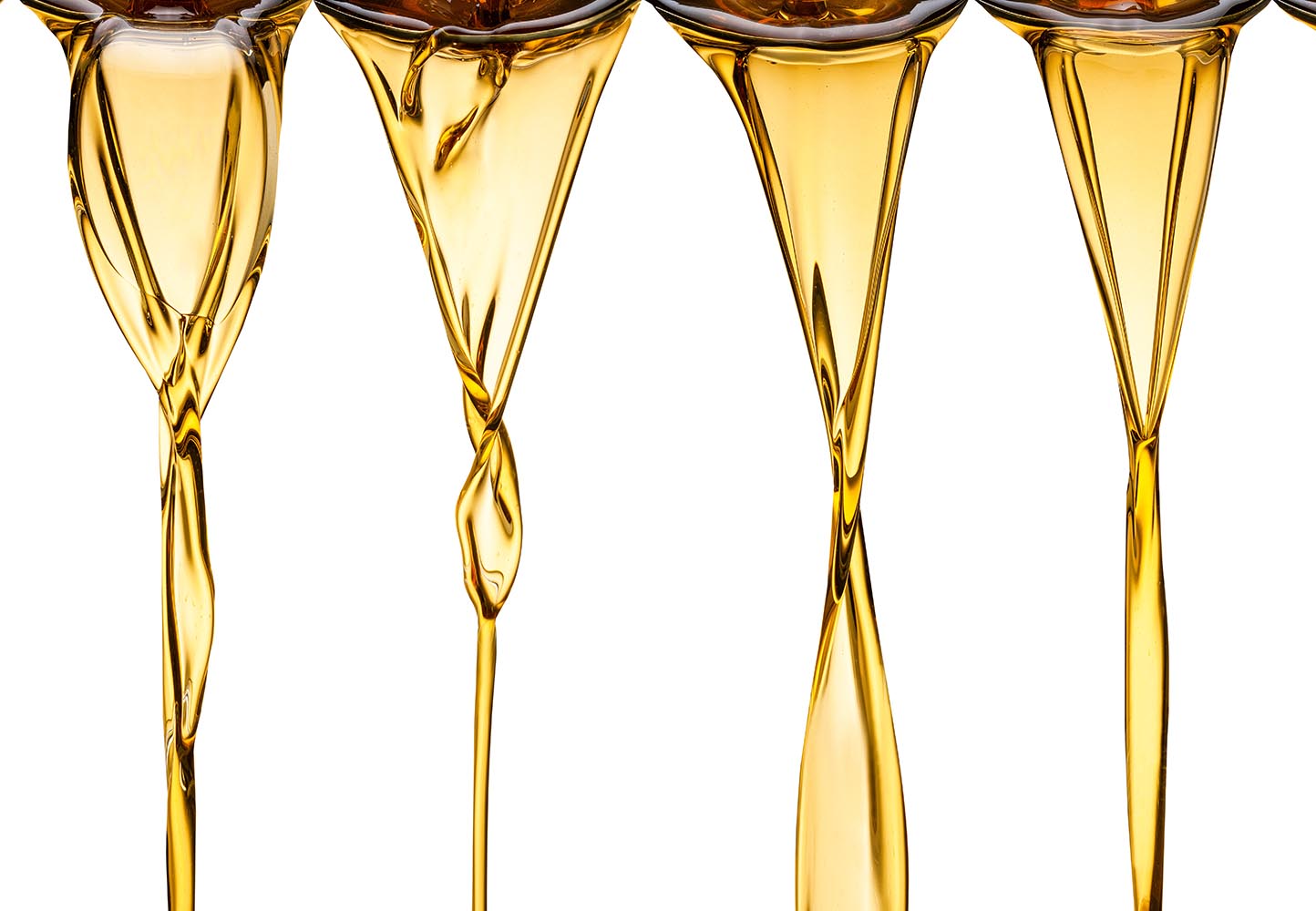
EV boom and sustainability focus fueling ester market expansion
The global lubricant market is experiencing a renewed focus on esters, with recent announcements from key players pointing to significant capacity expansions and increased demand. Esters, with their unique chemical properties and sustainable credentials, are emerging as vital components for next-generation lubricants.
In July, Emery Oleochemicals, a leader in natural-based specialty chemicals, announced new ester products under its DEHYLUB® brand. The launch highlights a growing trend towards sustainable lubrication solutions, particularly for EV applications. Likewise, Savita Oil Technologies Ltd. and Cargill Bioindustrial have introduced ester-based products with superior performance capabilities, signalling the beginning of a broader transformation in the lubricant industry.
At the Joint ALIA/F+L Asia Lubricant Exhibition held in Kuala Lumpur, Malaysia, on September 9-11, 2024, Eugene Chen, sales director of Taiwan-based Patech Fine Chemicals highlighted the advantages of ester-based fluids for EV applications, adding to the industry momentum. With a foundation in research and innovation, Patech has positioned itself as a leader in developing advanced lubricants that meet the evolving demands of modern transportation.
Automotive lubricants is the largest application segment for ester base oils, representing 35.94% of the market, according to a recent report from QY Research.
Understanding the growth drivers for esters
The surge in interest in esters is being propelled by multiple factors:
- Electric Vehicle Boom: The rapid expansion of EV production is necessitating new fluids that can withstand high temperatures, provide electrical insulation, and enhance thermal conductivity. Esters, with their excellent dielectric properties, are emerging as the base stock of choice for transmission fluids, immersion cooling systems, and battery coolants.
- Sustainability and Environmental Regulations: Increasing environmental awareness and stringent regulations are driving the shift towards biodegradable and low-toxicity lubricants. Esters, derived from renewable sources, align with global sustainability objectives and contribute to reduced carbon footprints.
- Industrial Demand and Advanced Applications: Beyond EVs, esters are gaining ground in sectors such as aviation, marine, and manufacturing, where high-performance lubricants are crucial. Their ability to perform under extreme temperatures and pressures makes them indispensable in industrial applications.
Projected market growth in Asia and beyond
According to QY Research, the global ester-based lubricants market is expected to grow at a compound annual growth rate (CAGR) of approximately 5.5% from 2023 to 2030. Asia, with its robust automotive and industrial sectors, is poised to become the largest market for ester lubricants.
India’s Savita Oil exemplifies this trend, with plans to double its automotive lubricant market share within four years. The company recently inaugurated a synthetic ester plant in Mahad, Maharashtra, aiming to achieve a production volume of 4,000 metric tonnes by late 2024. The plant, with an expandable capacity of 8,000 metric tonnes per year, will also serve other applications, such as transformer and battery coolants, reflecting the versatility of esters.
Savita Oil’s Ester 5 base stock is derived from edible oils sourced domestically and from several Southeast Asian countries, including Malaysia and Indonesia.
In a stock exchange announcement, Savita Oil indicated that the multi-purpose plant will manufacture synthetic esters for various applications, including electrical transformer fluids, immersion coolants and battery coolants for EVs. This initiative makes Savita Oil the first company to offer mineral oil-based, natural ester-based, and synthetic ester-based transformer fluids, it said.
The chemical edge: Why esters outperform
Esterification is a chemical process that involves the reaction between a carboxylic acid and an alcohol to form an ester. While fundamentally straightforward, the beauty of the method lies in its almost endless design potential. Chemists can achieve highly tailored properties by combining different acids and alcohols in a customisable, iterative process. Backed by data and technology, this allows for the design of esters with predictable and adjustable characteristics. The defined molecular structure is the hallmark of synthetic esters, setting them apart from traditional base stocks in Groups I, II, and III, which have broader molecular distributions.
Esters possess several properties that set them apart from conventional base oils:
– High Viscosity Index (VI): Esters maintain their viscosity across a broad temperature range, providing superior lubrication in extreme conditions.
– Excellent Lubricity and Friction Reduction: Esters form robust tribo-films, reducing wear and improving energy efficiency. Tests by Savita Oil revealed a 33% reduction in friction compared to traditional lubricants.
– Oxidative and Thermal Stability: Esters resist oxidation and varnish formation, ensuring long fluid life and cleanliness in EV systems.
– Electrical Insulation and Cooling Capabilities: With exceptional dielectric properties, esters are ideal for immersion cooling and transmission fluids in EVs, enhancing both thermal and electrical performance.
– Biodegradability: Esters’ environmental benefits include low toxicity and biodegradability, aligning with global sustainability targets.
These attributes are driving increased adoption, particularly for EV applications where fluid performance and environmental impact are critical considerations.
At the ALIA/F+L Asia Lubricant Exhibition, Chen discussed how Patech’s low-viscosity PALUB EV esters are specifically engineered to meet the stringent requirements of modern EV fluids. Key benefits include:
– Low Volatility and Oxidation Stability: PALUB EV esters exhibit lower NOACK volatility than PAOs, minimising evaporative losses and ensuring long-term fluid stability. Even under high temperatures, these esters resist oxidation, preventing sludge formation and varnish buildup in EV systems.
– Superior Heat Transfer Properties: PALUB EV esters outperform hydrocarbon-based fluids in heat transfer efficiency due to their higher density and optimised thermal conductivity. This ensures better temperature control, critical for battery cooling systems operating at around 90°C.
– Electrical Insulation and Dielectric Strength: These esters offer excellent dielectric properties, essential for protecting EV components from short circuits. Chen’s presentation highlighted their high breakdown voltage, a key feature in maintaining system integrity.
– Enhanced Friction Control and Lubricity: PALUB EV esters reduce friction and wear in transmission systems, ensuring smoother operation and longer component life. Chen explained that esters maintain lubricity even at lower viscosities, a challenge for many hydrocarbon-based fluids.
Molecular modelling: Predictive innovation at work
Patech employs advanced molecular modelling techniques to optimise the structure of its ester fluids, saving both time and costs. Using modified Ruzicka-Domalski methods, the company predicts the heat capacity and thermal conductivity of different formulations with high accuracy. This data-driven approach allows Patech to develop fluids tailored for specific applications, such as EV transmissions and immersion cooling systems.
Addressing the challenges of ester adoption
Despite their advantages, esters do have some negative properties that limit their use in certain applications. One key issue is hydrolytic stability—esters are prone to hydrolysis, where they react with water, breaking down over time. This can reduce their effectiveness in environments with moisture exposure, such as marine applications or systems where water ingress is a risk.
Another challenge is the higher cost associated with esters compared to other synthetic base oils like PAO and PAG. Esters are more expensive to produce, largely due to the complex chemical processes required for their synthesis. PAOs, derived from the polymerization of alpha-olefins, offer a much more cost-effective option, while still providing excellent performance characteristics, particularly in terms of low-temperature fluidity and oxidative stability. PAGs are also a popular alternative, particularly in applications requiring high lubrication and cooling, such as compressors. However, PAGs tend to have lower compatibility with certain elastomers, which can be a limiting factor.
When comparing esters with PAO and PAG, cost is a significant disadvantage for esters. While PAO remains the standard in many synthetic lubricants for its balance of performance and cost, esters are generally reserved for applications where the specific properties they offer—such as biodegradability or high thermal stability—outweigh the cost concerns.

Future outlook: The road ahead for esters
The outlook for esters in the lubricant market is promising, with growing investments in research, production, and application development. Cargill Bioindustrial’s Priolube™ EF 7010 and Emery Oleochemicals’ DEHYLUB® products illustrate the industry’s commitment to developing cutting-edge solutions for EVs and beyond.
Emery Oleochemicals, a world-leading manufacturer of natural-based specialty chemicals, has recently commercialised its first five products for the formulation of thermal fluids, transmission fluids and motor oils under the DEHYLUB® brand. It highlighted the exceptional performance of DEHYLUB® monoesters and diesters, noting their superior lubricity across all viscosity grades, high oxidative stability for extended fluid life, excellent performance at low temperatures and high flash points. The products also offer outstanding dielectric and cooling properties and are compatible with most other base stocks. Furthermore, the company underscored the high biodegradability of these products, emphasising their contribution to sustainability efforts.
Cargill Bioindustrial, a provider of bio-based solutions for the manufacturing and chemical industries, announced the launch of its low-viscosity synthetic ester base oil, Priolube™ EF 7010, in July. The company describes it as the most advanced EV-specific ester base oil, emphasising its “exceptionally low levels of traction,” designed to produce EV transmission fluids that deliver excellent efficiency and reduced wear.
Natural esters are growing in popularity for good reason, but they are not all the same, says Cargill. The company highlighted the impact of Priolube™ EF 7010 in increasing efficiency in e-axles and transmissions, noting its excellent load-handling capabilities. The product also boasts exceptionally low NOACK volatility, reducing evaporative losses to as low as 2% at 200°C in the NOACK test. Priolube™ EF 7010 is compatible with motor winding insulation materials and many standard automotive elastomers, without compromising performance, says Cargill.
The company emphasised the superior thermal and dielectric properties of its products, highlighting their suitability for formulating high-efficiency fluids for EV transmissions, gearboxes, and immersion cooling fluids for battery systems. Cargill also noted that these products are compatible with both Group III and Group IV base oils.
The rise of electric mobility, coupled with environmental mandates, will continue to push the boundaries of ester technology. Analysts predict that the demand for ester-based lubricants will outpace that of traditional lubricants, particularly in Asia, where rapid urbanisation and industrialisation are key growth drivers.








